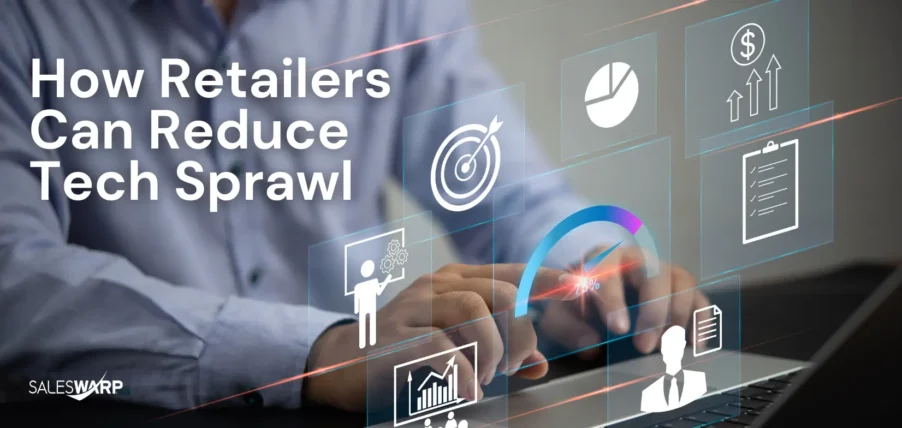How Retailers Can Reduce Tech Sprawl
As retailers continue to adopt new solutions, they often become entangled in a web of disconnected systems—a phenomenon known as tech sprawl. This unchecked expansion can lead to reduced productivity and fragmented customer journeys. Integrated solutions can make a huge impact on retailers, helping consolidate their fragmented systems.
Why Should Retailers Care?
Tech sprawl is the accumulation of disjointed software systems, applications, and tools that fail to work in tandem. Often born out of a “patchwork” approach to problem-solving, tech sprawl can result from:
- Solving individual issues with point solutions that don’t integrate well with existing systems.
- The rapid adoption of new technology without a clear focus on compatibility.
- Changes in IT requirements because of evolving market demands, customer preferences, and supply chain complexities.
Signs of Tech Sprawl and the Risks of Ignoring It
Retailers often face several challenges when dealing with tech sprawl. High IT maintenance costs are one of the most obvious signs. Managing multiple, fragmented systems requires a lot of time and resources, which can drain budgets. Disconnected systems lead to inconsistent data as it creates silos that make it difficult to ensure accuracy.
Disjointed systems also lead to an inconsistent customer journey, with issues like delayed order fulfillment, incorrect updates to inventory levels, and poor omnichannel experiences. If left unaddressed, these issues will compound. Overall, the mix of redundant workflows and incompatible systems slows down processes. Customer dissatisfaction grows as businesses fail to meet expectations, leading to lost revenue and stability. Recognizing these warning signs and acting proactively is essential for maintaining an organized, integrated tech stack.
How to Reduce Tech Sprawl in Retail
Here are actionable steps for retailers:
- Frequently Audit Your Tech Stack
Review all the software, applications, and systems your business currently uses to identify redundant or underutilized tools. Assess how well they integrate with each other and remove any unnecessary applications.
- Centralize Order, Inventory, and Shipping Systems
A unified solution for order processing and management, inventory tracking, and shipping management can ensure that data is consistent across all aspects of your supply chain.
- Transition to Cloud-Based Platforms
Cloud-based platforms are more scalable and easier to update, with accessibility across multiple locations unlike legacy systems. Cloud solutions simplify integration by consolidating multiple legacy systems into a single, cohesive platform.
- Focus on Integration and Customization
Choose tools that offer open APIs or native integrations with your existing systems. Customizing platforms to align with your specific business processes helps optimize workflows without introducing unnecessary complexity.
Simplifying your retail tech stack doesn’t have to be overwhelming. SalesWarp offers a unified platform designed to consolidate fragmented systems and streamline operations. Speak with a specialist today to learn how our solutions can help you eliminate tech sprawl!


